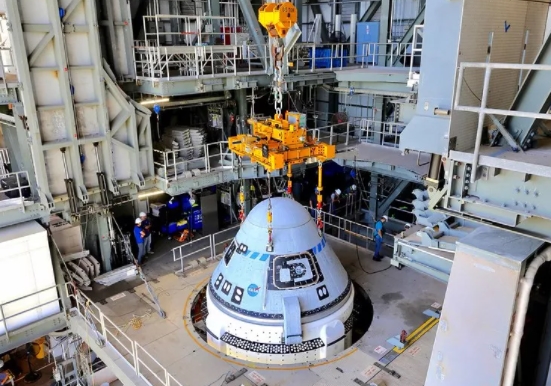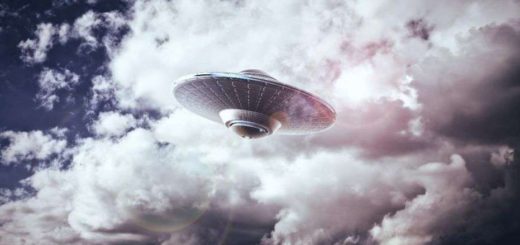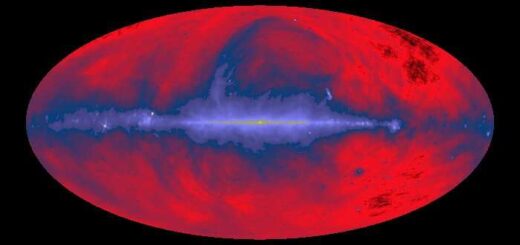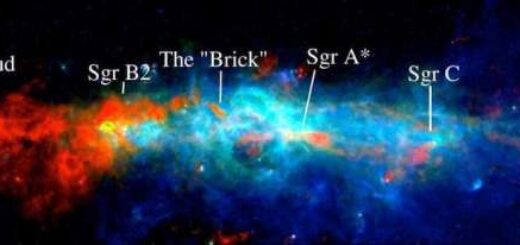How to watch Boeing launch its 2nd Starliner test flight for NASA on July 30

Boeing is set to launch its Starliner spacecraft on a crucial uncrewed flight to the International Space Station next week. Here’s how you can watch the weeklong Orbital Flight Test 2 (OFT-2) mission live.
The main show is the launch itself, which will stream on NASA Television, the NASA app, the agency’s website and here at Space.com. The liftoff atop a United Launch Alliance Atlas V rocket is scheduled for 2:53 p.m. EDT (1853 GMT) next Friday (July 30) from Cape Canaveral Space Force Station in Florida. You’ll be able to watch the launch and mission activities here and on Space.com’s homepage, as well as on NASA TV.
If all goes to plan, Starliner will take about 31 minutes to reach its preliminary orbit and then will target a docking the next day with the International Space Station. Starliner tried this meetup once before, on the OFT-1 mission in December 2019, but suffered a series of technical issues that left the capsule stranded in the wrong orbit for a rendezvous.
Photo tour: Inside Boeing’s CST-100 Starliner spaceship hangar
Boeing’s CST-100 Starliner spacecraft was secured atop a United Launch Alliance Atlas V rocket at the Vertical Integration Facility at Space Launch Complex-41 at Florida’s Cape Canaveral Space Force Station on July 17, 2021.
Boeing’s CST-100 Starliner spacecraft was secured atop a United Launch Alliance Atlas V rocket at the Vertical Integration Facility at Space Launch Complex-41 at Florida’s Cape Canaveral Space Force Station on July 17, 2021. (Image credit: United Launch Alliance)
The OFT-2 docking is scheduled for 3:06 p.m. EDT (1906 GMT) on Saturday (July 31) and will also livestream on NASA’s channels and the Space.com website. Starliner will bring 400 lbs. (181 kilogram) of NASA cargo and crew supplies to the orbiting complex and return to Earth with more than 550 lbs. (250 kg) of cargo, the agency said in a statement.
The date of Starliner’s departure from the space station has not yet been scheduled, but the OFT-2 mission is expected to last about a week. See below for a detailed timeline of media events in the leadup to the mission and its first few days.
“OFT-2 will demonstrate the end-to-end capabilities of the Starliner spacecraft and Atlas V rocket from launch to docking to a return to Earth in the desert of the western United States,” NASA said in the same statement. “The uncrewed mission will provide valuable data toward NASA certifying Boeing’s crew transportation system for regular flights with astronauts to and from the space station.”
Boeing is one of two commercial crew providers for the International Space Station, along with SpaceX, which has been using its Crew Dragon spacecraft and Falcon 9 rocket for operational activities since 2020. SpaceX and Boeing received NASA contracts in 2014 valued at a combined $6.8 billion to encourage the development of crewed spaceships meant to replace the space shuttle, which retired in 2011. Boeing is expected to start sending astronauts to space in 2022, provided all goes well with OFT-2.
After the shuttle retired, NASA relied on Russian Soyuz spacecraft as the sole astronaut taxi for nine years, between 2011 and 2020. The agency continues to procure seats on Soyuz to fill ISS requirements in Starliner’s absence. The agency pledged it will continue to trade seats with the Russians — putting Americans on the Soyuz and Russians on American vehicles – but this arrangement may be delayed until at least 2022.
In the meantime, here is the full coverage of live NASA prelaunch and launch activities for OFT-2. All times are approximate and may change due to technical or weather considerations.
Tuesday, July 27
TBD – Prelaunch news conference on NASA Television, roughly one hour after the launch readiness review is complete. Scheduled participants are:
Steve Stich, NASA manager of the commercial crew program;
Joel Montalbano, NASA manager of the International Space Station program;
Jennifer Buchli, NASA deputy chief scientist of the International Space Station program;
John Vollmer, Boeing commercial crew program vice president and program manager;
Gary Wentz, ULA’s vice president of government and commercial programs;
Will Ulrich, U.S. Space Force launch weather office for 45th Weather Squadron.
Thursday, July 29
10:30 a.m. EDT (1430 GMT) – NASA administrator briefing with the following scheduled participants:
NASA Administrator Bill Nelson;
NASA Deputy Administrator Pam Melroy;
Janet Petro, director of NASA’s Kennedy Space Center;
Chris Ferguson, Boeing’s director of Starliner mission operations and integration/crew systems;
Barry “Butch” Wilmore, NASA astronaut on Starliner’s first crewed mission (Crew Flight Test)
Michael “Mike” Fincke, NASA astronaut on Crew Flight Test;
Nicole Mann, NASA astronaut on Crew Flight Test;
Jennifer Buchli, NASA deputy chief scientist of the International Space Station program.
Friday, July 30
2 p.m. EDT (1600 GMT) – NASA TV launch coverage begins.
2:53 p.m. EDT (1653 GMT) (approximately) – Starliner OFT-2 lifts off from Cape Canaveral Space Force Station in Florida.
3:24 p.m. EDT (1724 GMT) (approximately) – Starliner OFT-2 reaches its preliminary orbit.
4 p.m. EDT (1800 GMT) (approximately) – Postlaunch news conference on NASA TV with representatives from NASA, Boeing and ULA. Participants have yet to be announced.
Saturday, July 31
12 p.m. EDT (1600 GMT) – NASA TV rendezvous and docking coverage begins.
3:06 p.m. EDT (1906 GMT) (approximately) – Livestreamed docking of Starliner at the International Space Station.
Sunday, Aug. 1
9:15 a.m. EDT (1315 GMT) – NASA TV hatch opening and welcoming remarks coverage begins.
9:35 a.m. EDT (1335 GMT) (approximately) – Hatch opening and welcoming remarks.



 Creators of mankind
Creators of mankind Description of “Tall white aliens”
Description of “Tall white aliens” Where they came from?
Where they came from? About hostile civilizations
About hostile civilizations The war for the Earth
The war for the Earth “Tall white aliens” about eternal life
“Tall white aliens” about eternal life Video: “Nordic aliens”
Video: “Nordic aliens” Aliens
Aliens Alien encounters
Alien encounters The aliens base
The aliens base UFO
UFO Technology UFO
Technology UFO Underground civilization
Underground civilization Ancient alien artifacts
Ancient alien artifacts Military and UFO
Military and UFO Mysteries and hypotheses
Mysteries and hypotheses Scientific facts
Scientific facts


















